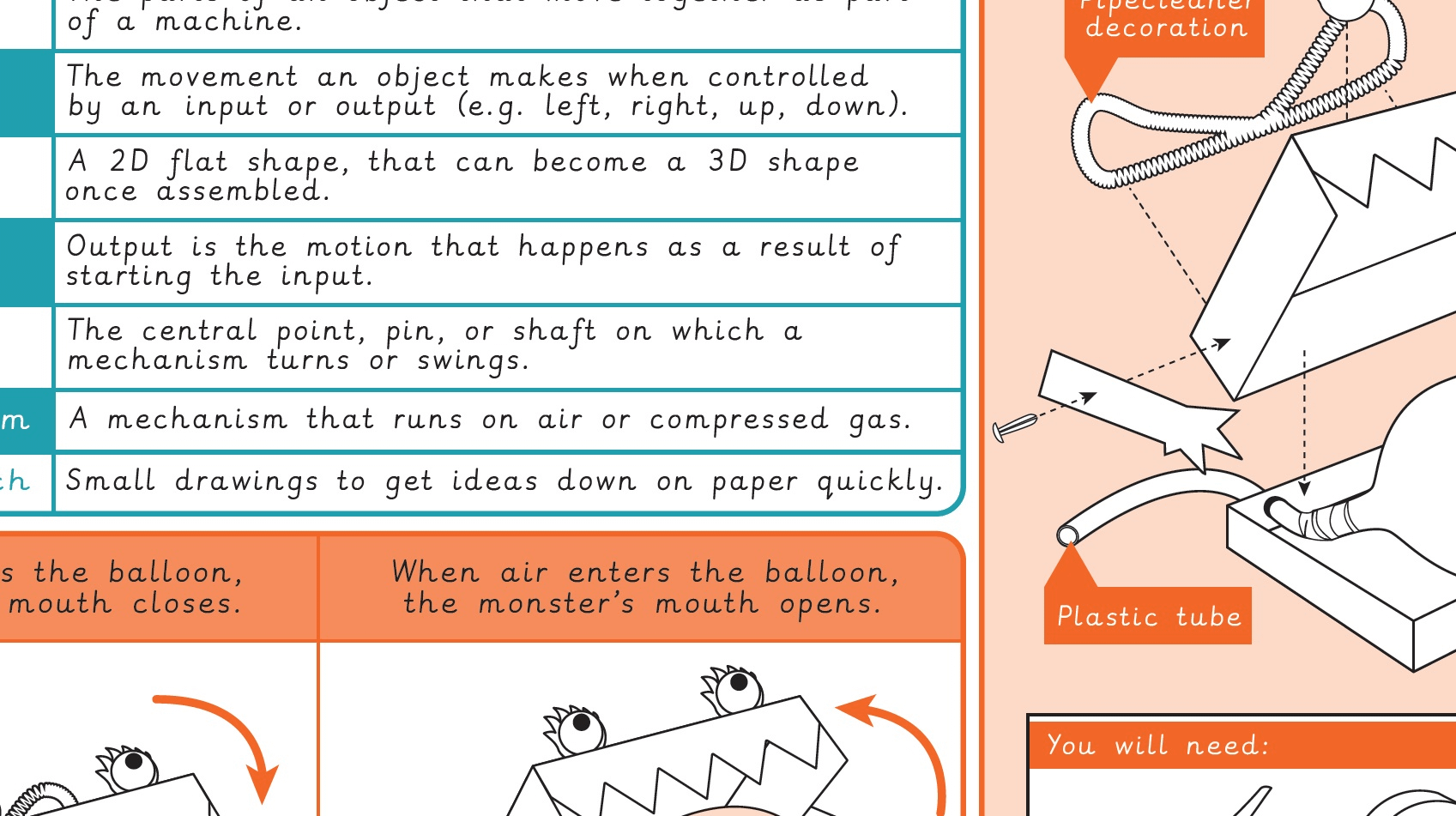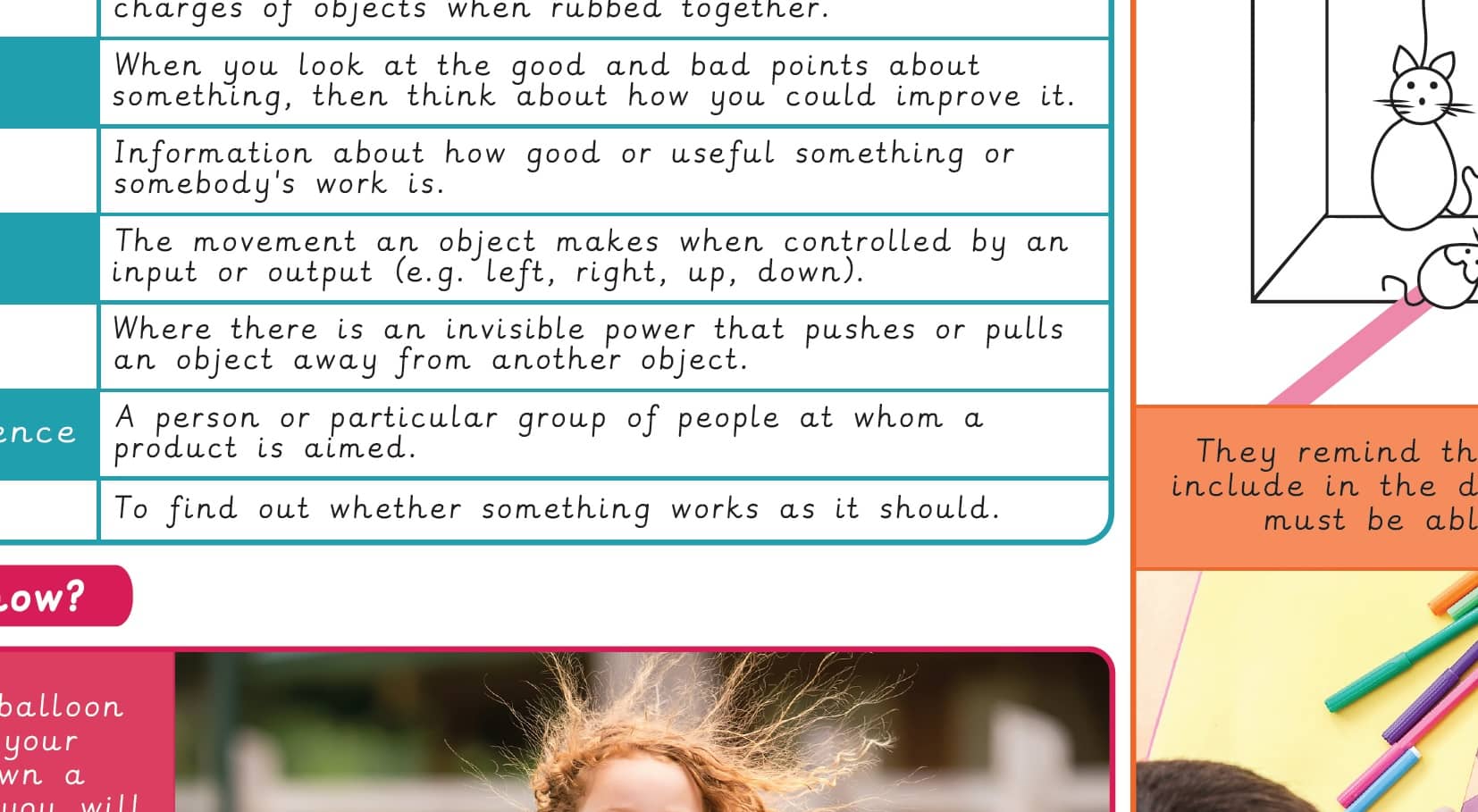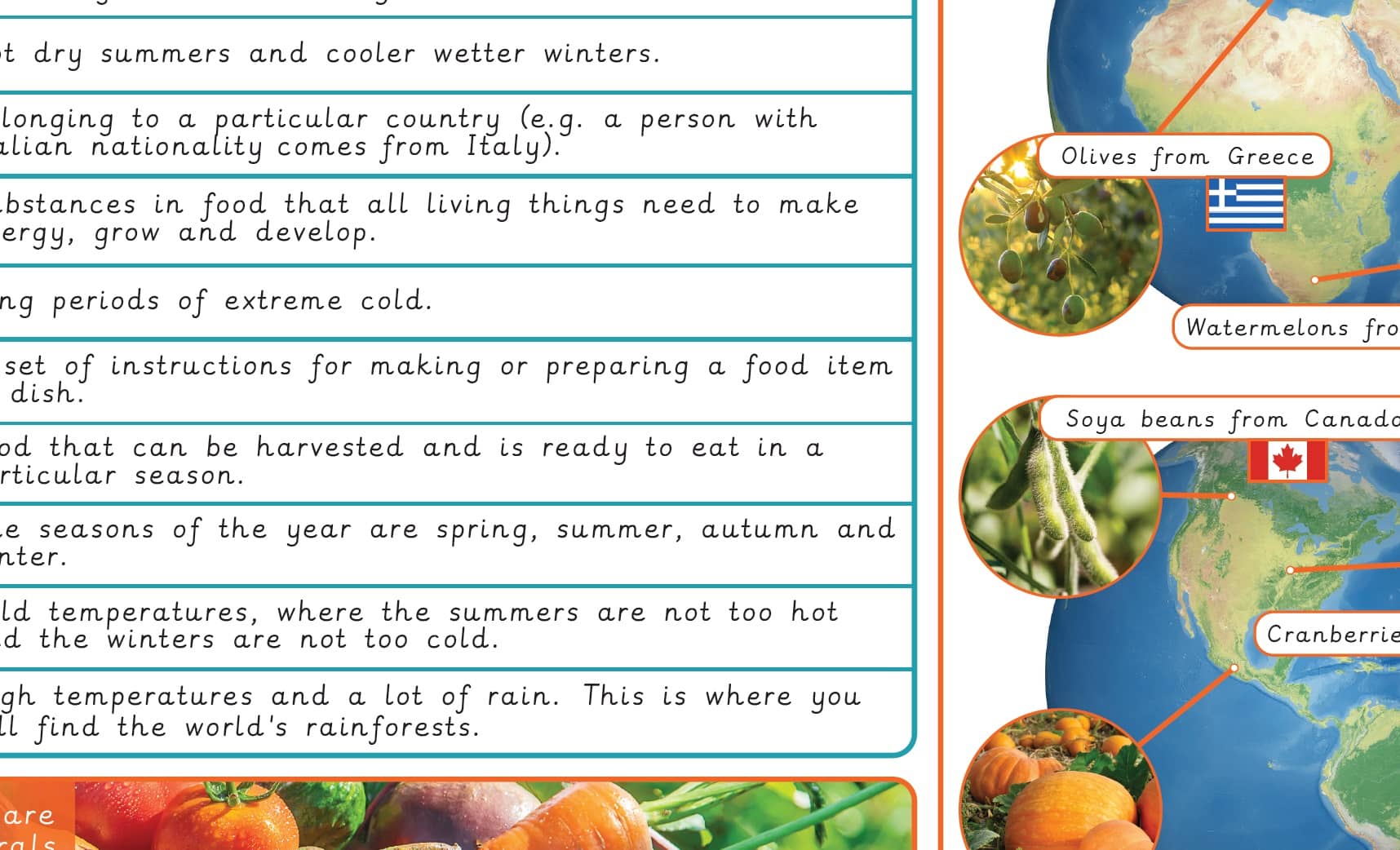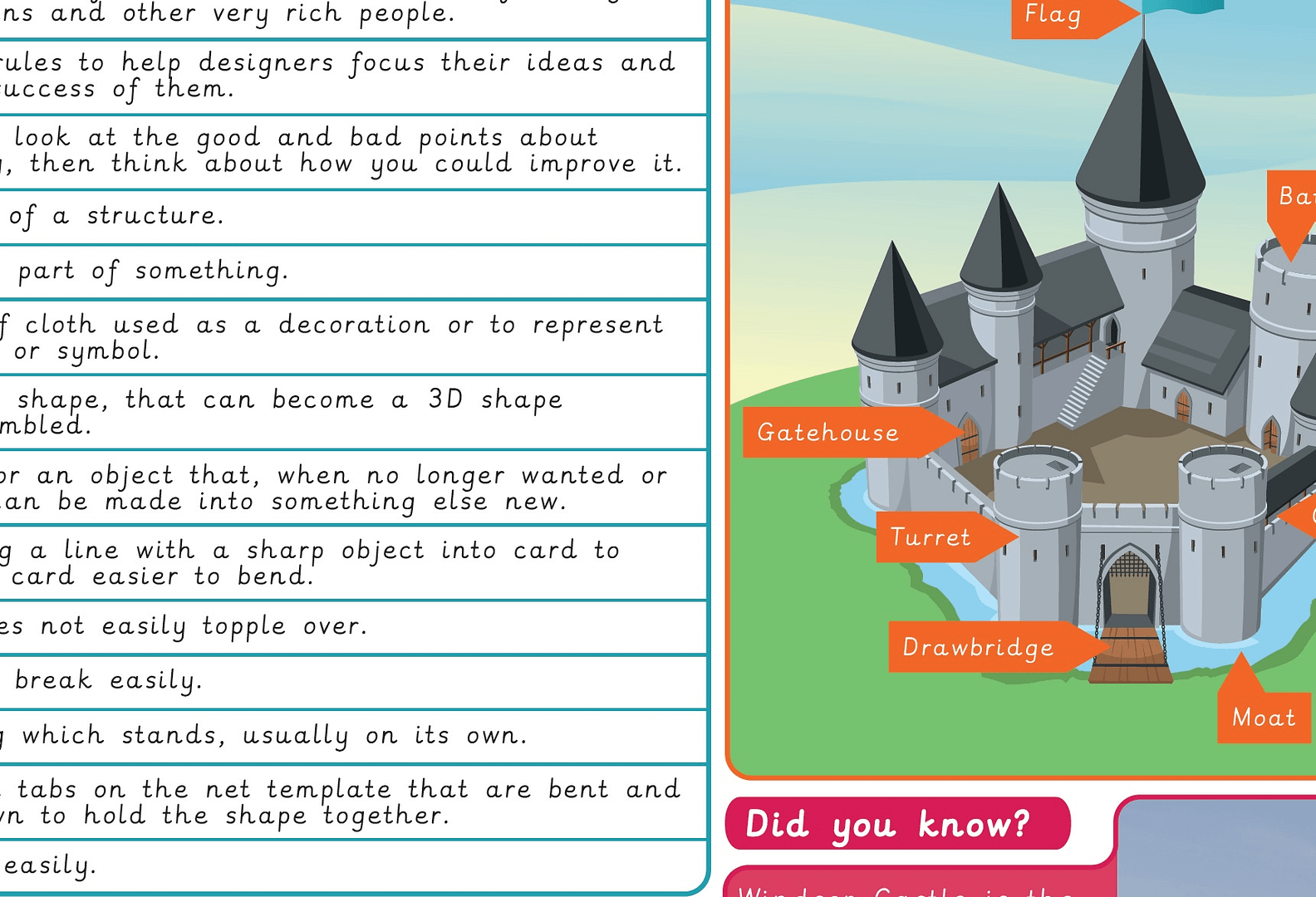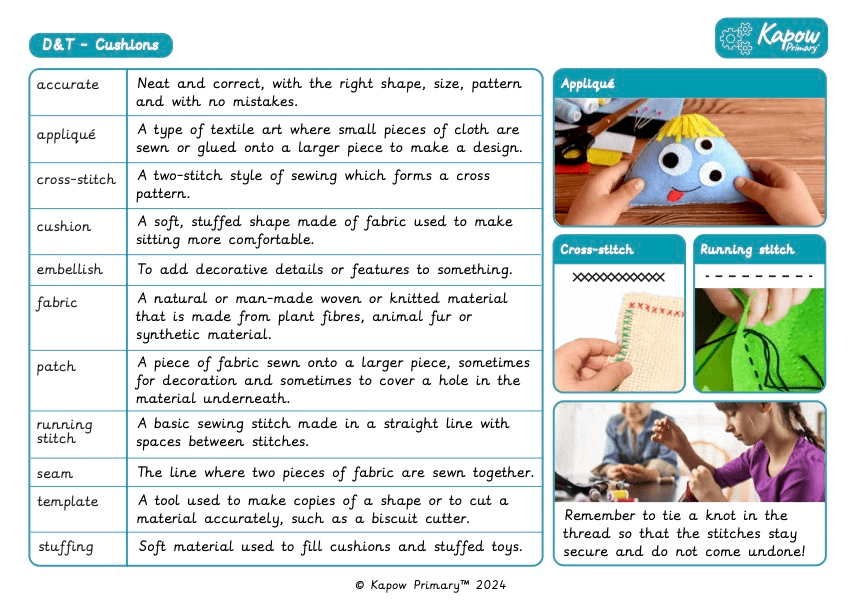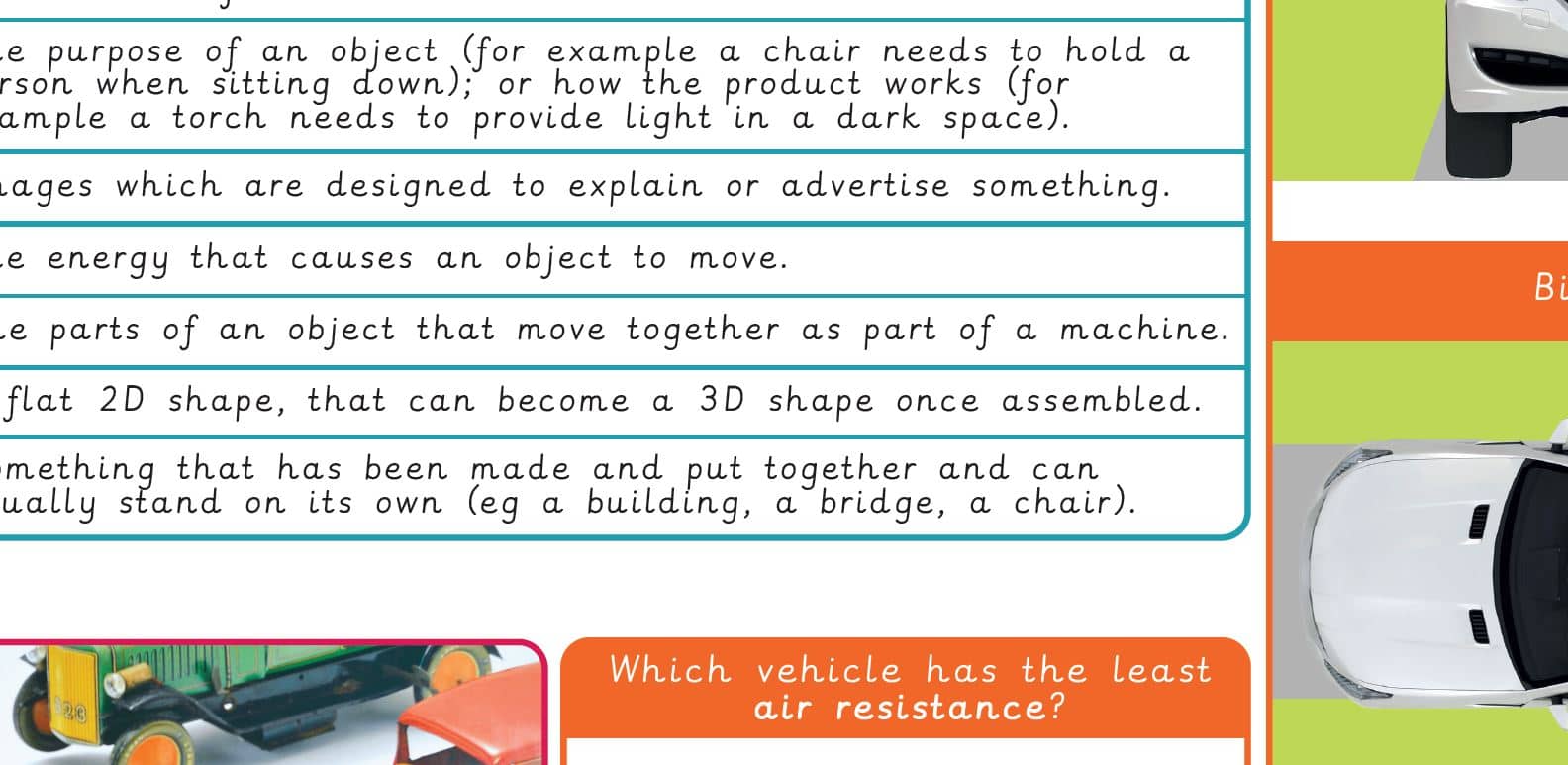Teaching resource: Knowledge organiser
Archived – Knowledge organiser – D&T Y3: Static electricity
A Knowledge organiser that captures the essential knowledge and skills learnt throughout the now unit Archived – Design and Technology, Year 3, Electrical Systems – Static Electricity.
This resource is designed to support the pupils as they explore the principles of static electricity and its applications in design and technology. It introduces key vocabulary such as electrostatic, attract, repel, motion, and component, helping the pupils understand how static charges are created and how they influence movement. The pupils will also learn about design criteria, evaluation, and constructive criticism to assess and refine their projects. It is perfect for consolidating essential knowledge and fostering curiosity about electrical forces by allowing the pupils to experiment with electrostatic energy.

